
In La Boca, one of the districts in Buenos Aires you will find this huge mural "Juicio y Castigo (Dedicado a los Madres de Mayo)" Translated, it means something like «Trial and Punishment (Dedicated to the Mothers of May)». I did a guided walking tour and that's how I got to see this mural and also got an explanation of the political issues the mural conveys.
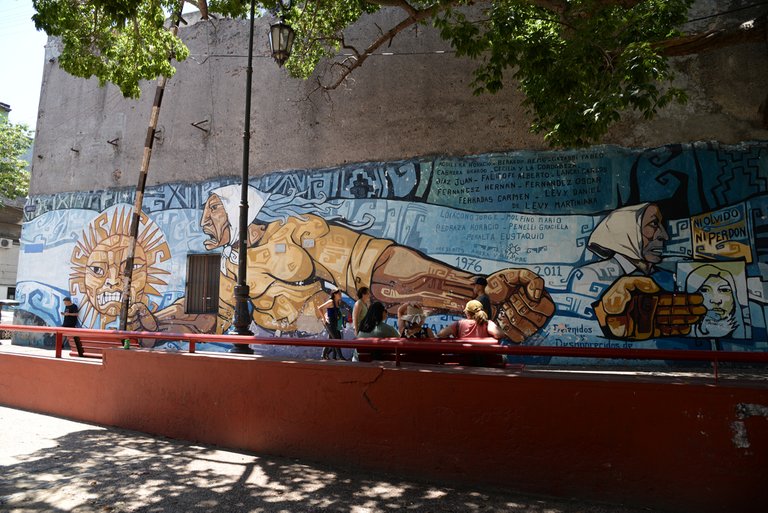
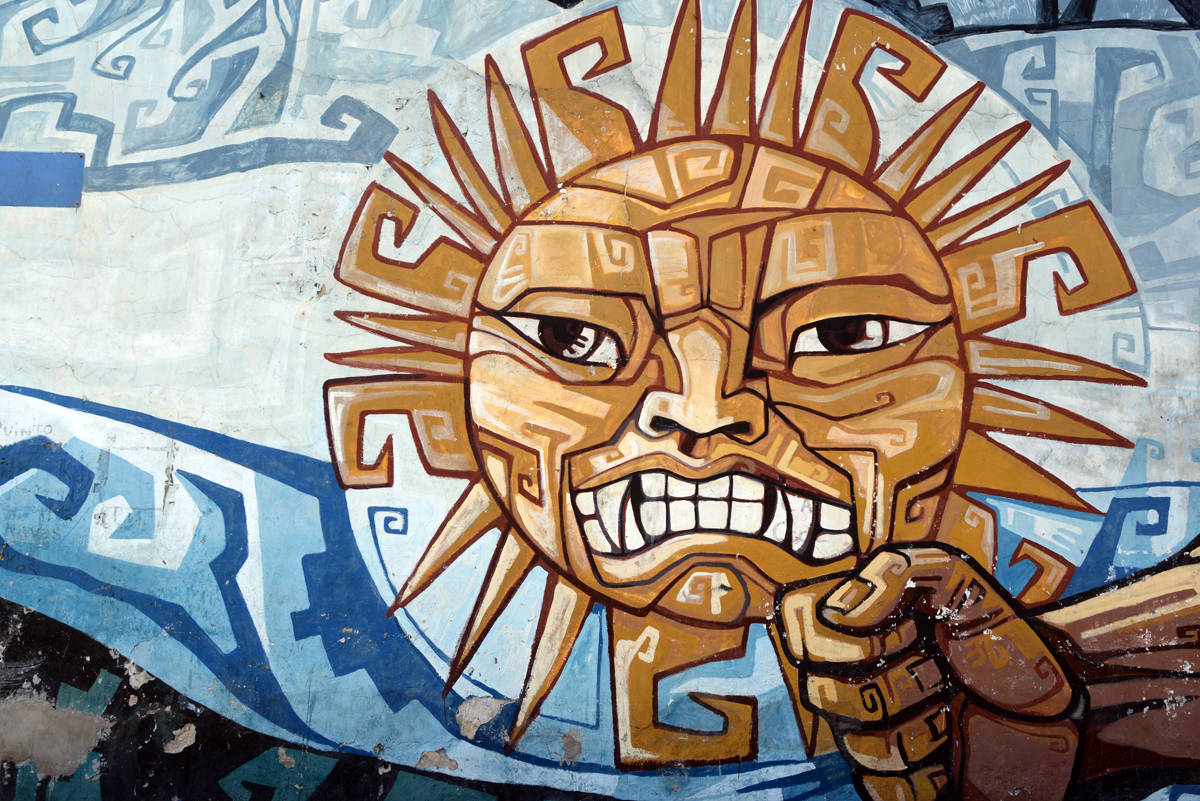
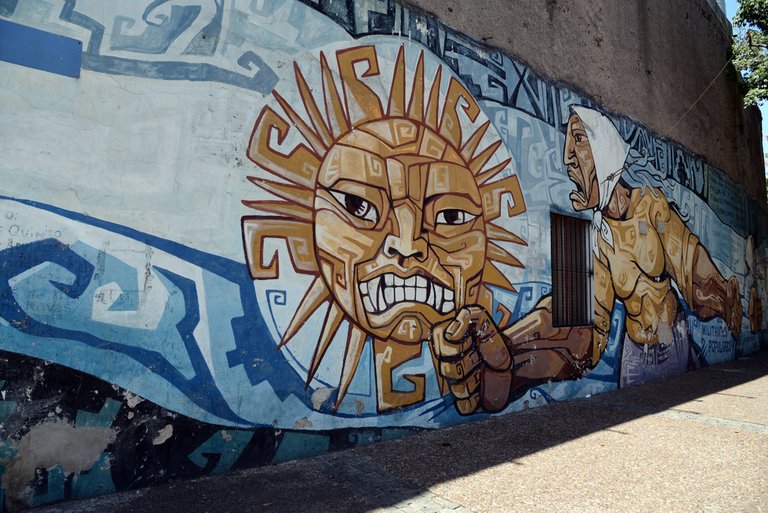
Argentina has a history of dictorships and military coups. This painting can be linked to parts of Argentina's history of military coups and dictatorships. In the 70's Argentina was in situation of political chaos, violence and killing. In 1976, yet another military coup took place. The president who was installed used brutal methods to eradicate the guerrilla organizations and everyone else who opposed to his regime. This period lasted until 1982 and is called «the dirty war». In this process, thousands of people, such as activists, guerrilla soldiers and other opposers were abducted and killed by the military regime. It is assumed that around 30,000 people "disappeared". Later one found out that the vast majority of these were killed.
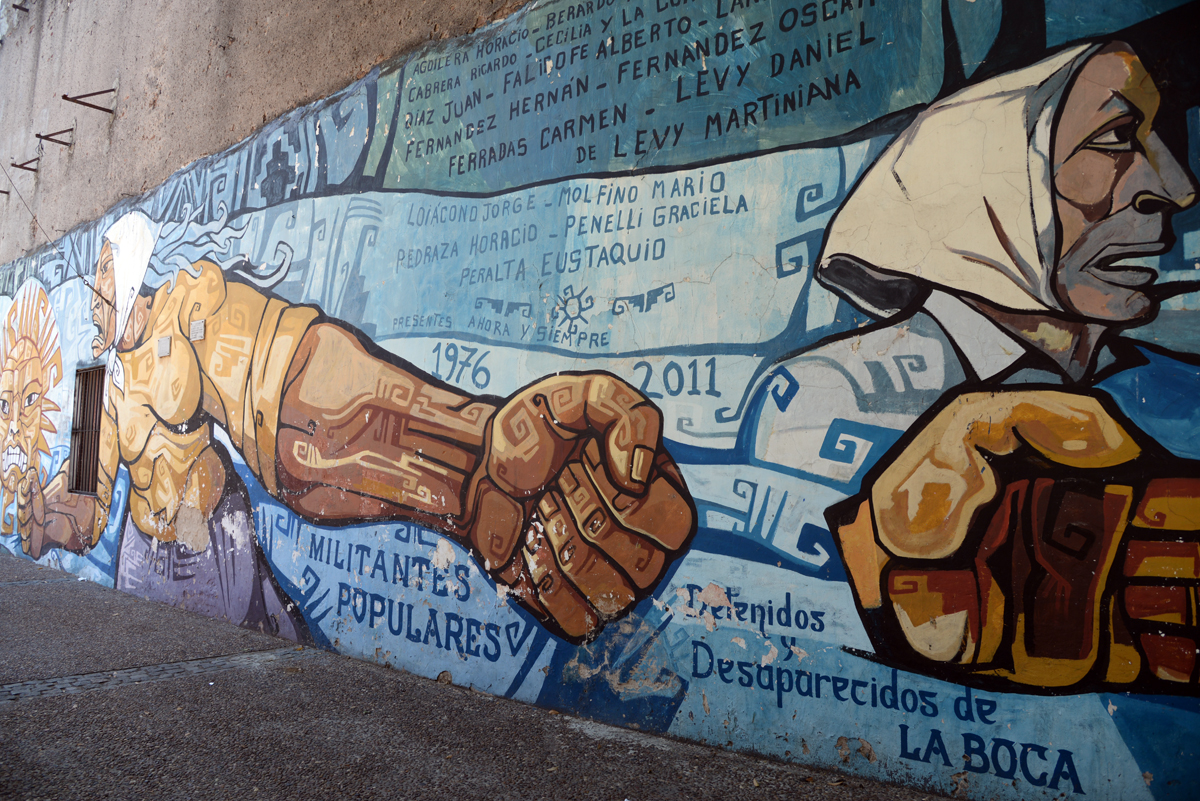
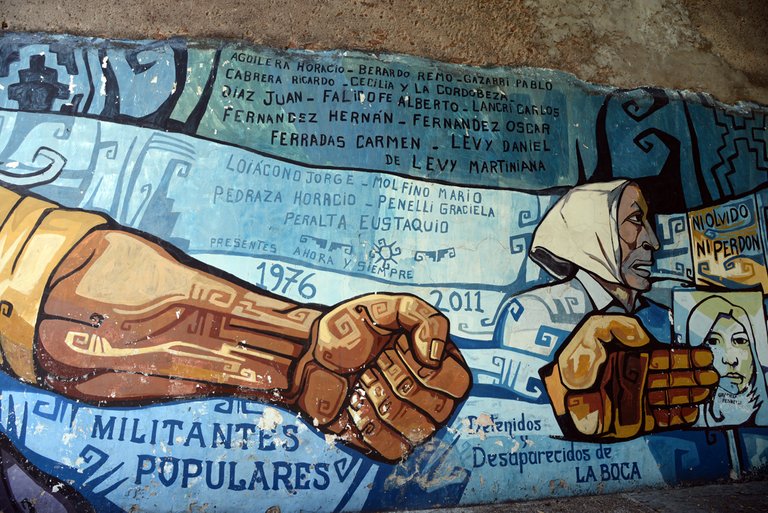
The sun is the symbol also found on the Argentine flag. The mural tells about what happened in the year 1976 in Argentina. The names written above symbolize the people who simply disappeared without knowing what had happened to them.
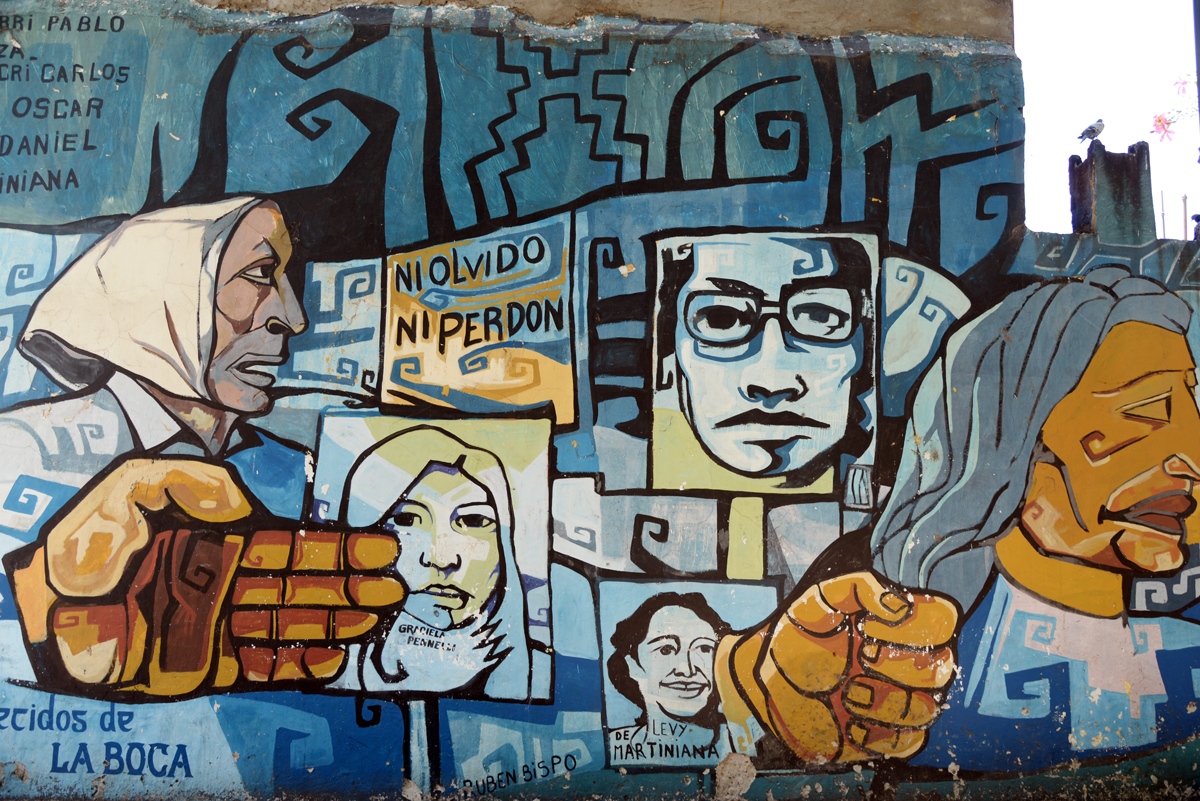
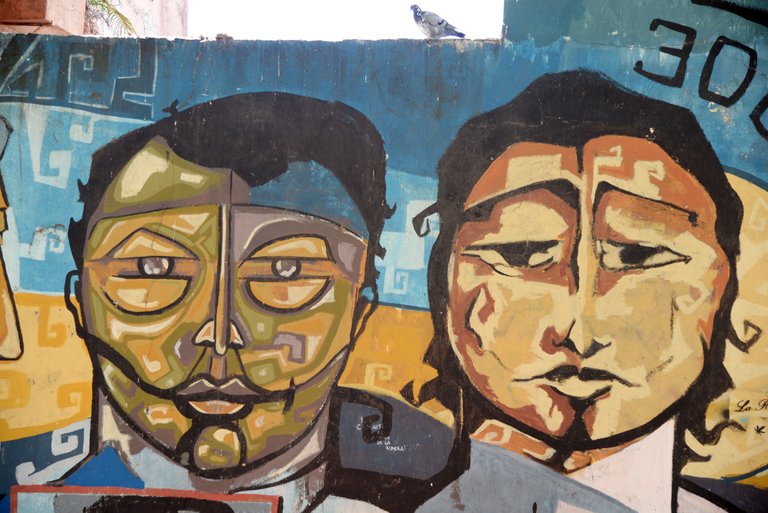
The woman looking at the pictures of missing persons, symbolizes the mother/mothers who still ask for their sons. These mothers whose sons and daughters had "disappeared" did protest against the dictator. When they did that, they gathered on the Plaza de Mayo in central Buenos Aires. That's how the come to be called the Mothers of Plaza de Mayo. On the mural the woman, or mother is wearing a white scarf on her head. This is what these motheres did so that they could easily recognize each other.
The entire painting is large and fills the entire wall. It is somewhat worn when you get close to it, but you still get the point. It was really great to have a guide because we learned about the coup in 1976. Otherwise, it is not certain that I would have understood what that year meant. But since then, Argentina has been a democracy, something the guide also pointed out. She did mention the name of the artist, but I didn't catch it, I am affraid!
You like street art? Join our street art contest ->CCC's Street Art Contest #132 | 100% Liquid Payout and ecency points as Prize Pool & Winners of #131
Please do follow if you want to keep up with my next street art. Any upvotes or reblogs are hugely appreciated!
Latest street art post, check out :
STREET ART #142 - Palermo's street art
U.J
Kristiansand, Norway
All the photoes are mine, Ulla Jensen (flickr, Instagram and facebook)
[//]:# (!pinmapple -34.64191 lat -58.36218 long STREET ART #143 - A mural dedicated to the mothers who are missing their sons (Argentina) d3scr)Latest content: Travel, Art, Article, Photo


